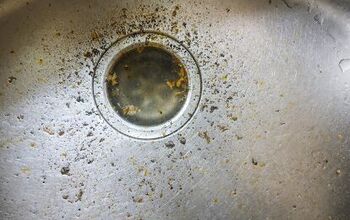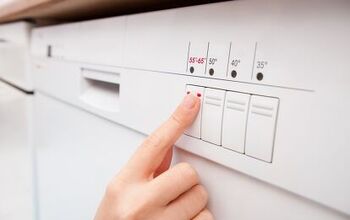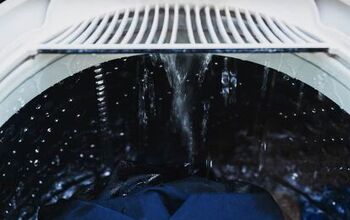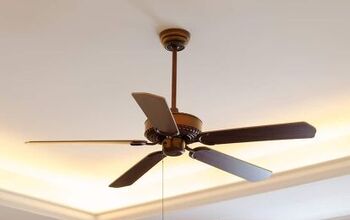Portable Dishwasher Hose Keeps Popping Off? (Fix It Now!)

Portable dishwashers can be a great fit for smaller homes. Capable of storing in a small closet, you can break out the dishwasher when you need it and tuck it away when not in use. It is a great way to keep your dishes clean without taking up the space that an in-counter unit tends to take up.
From time to time, you may notice that the hose for the portable dishwasher keeps popping off. When the hose isn’t properly connected, you may have issues running a cycle. What is the reason behind the hose popping off? There are two common reasons: the hose is getting kinked up, leading to more pressure than normal. It could also be that the hose connect wears down and fails to hold the hose into place.
Do You Need Appliance Repair Services?
Get free, zero-commitment quotes from pro contractors near you.

Hose Popping Off is a Small, Yet Large Issue
More often than not, a hose that won’t stay on has a relatively easy fix. So, while that is reassuring, it is still a problem all the same. In fact, if you try to run the dishwasher with a hose that constantly disconnects, you could be facing a real mess.
There are some modern dishwashers that simply won’t run if the hose comes loose. But for older models, you may be looking at a huge mess if you run the unit without a properly connected hose. Be sure that the unit is properly connected before running or you could be staring down a large clean-up effort.
Water Pressure
The simplest cause and solution involves water pressure and your hose. The dishwasher unit requires a set amount of water pressure in order to effectively clean the dishes within. That means the hose needs to be able to handle the subsequent water pressure.
- Kinking. The most likely explanation for why the hose pops off is due to kinking in the hose. When the hose kinks up, the pressure builds up in that area of the hose. When the pressure gets to be too much, it can lead to the hose simply popping loose of the connector. Make sure that the hose is not bunched up and as straight as it can be before running.
- Water pressure is too high. On the other hand, the hose may be perfectly straight yet still pop off. When you are certain that there are no kinks anywhere in the line, the water pressure may be the next likely cause. Try running the cycle again. If you notice that the hose pops off again, check the water pressure.
Faucet Adaptor
The way that portable dishwashers work is that they hook up to your kitchen faucet. There is an adaptor applied that prevents leaking while the dishwasher runs. If the hose continues to come loose and pop off while running, the adaptor is probably the first place to start.
Generally speaking, when the faucet adaptor is the cause, it is noticeable right away. Test out your appliance a couple of times with the focus being on the adaptor.
If the adaptor is at fault, you will have to replace it. You can generally order them from a parts dealer or you may even be able to find one at your local home improvement store. Check the appliance manual for the precise part number. You can also check through the manufacturer to see if they have any replacement adaptors available.
Clean the Adaptor
If, after inspecting the faucet adaptor, you are entirely certain that there is nothing wrong with it, take a look at the faucet. Over time, dirt and grime can build up on the faucet and make adhering to it all the more difficult.
Before replacing the faucet adaptor entirely, give the faucet a good cleaning. You would be surprised that just a little dirt can keep the adaptor from seating properly, popping it loose when the dishwasher cycle begins.
You can clean it pretty effectively using vinegar or another acidic household cleaning agent. When you have properly cleaned the faucet, test out your connection again. If it still won’t seat properly, then you know that cleanliness is not the issue and can move through troubleshooting the other problems.
Damage to the Hose or Other Components
When the adaptor looks fine and you’re certain that water pressure is not at play, it could simply be damage to the hose. When the hose seats properly, it creates a seal around the connections and distributes the water.
- Check the hose for any splits or cracks. Depending on the severity of the issue, you may be able to get away with patching the problem. More often than not, however, you will have to replace the hose entirely. Thankfully, it is a relatively cheap part so you won’t have to worry about breaking the bank to replace it.
- Repair kits. For the most part, there are also repair kits available for instances just like these. The repair kits tend to come with things like o rings and retainers. They may also come with new grippers; these look very similar to roller bearings. Swap out all of the old components and test it out with a new cycle. When those components have gone bad, the cycle may start but the hose will come flying off before long.
How Do You Extend a Portable Dishwasher Hose?
While portable dishwashers are great for keeping dishes clean without taking up a ton of space, you need to ensure that all the components are properly connected. One of the most common issues is that the hose is too short and requires extending. So, how can you extend the hose to fit your current setup?
Step 1: Head to the hardware store
Take the dimensions of the hose down or bring the component with you. Since there are two hoses at the back of your dishwasher, you will need an extension hose for each. Use the hoses at the store to find the right metal clamps and coupler for the job.
Step 2: Fitting the coupler
The clamps that come with the unit are used to secure the hose in place. Make sure that the clamp is tight enough to stay on the hose without cutting off flow. Then, insert the coupler onto the exposed end of your original hose while taking the other end and fitting it onto the extension hose.
Step 3: Tighten the metal clamps
Take your clamps and move them so that they sit on top of the coupler. When you have made sure that it is snug, give the hose a light tug to ensure that it is secure. Attach the coupler to the outside of your two hoses so that the hoses go inside of the metal clamps and sit snugly yet securely.
Step 4: Test it out
With your clamps in place, the only thing left to do is give it a test run. Make sure that there are no leaks and that the hoses don’t come loose. Make adjustments where needed.
Do You Need Appliance Repair Services?
Get free, zero-commitment quotes from pro contractors near you.

How Do You Fix a Portable Dishwasher That Won’t Drain?
Having a portable dishwasher is a great way to save on space, but that does not mean they come without the frustrations of a household dishwasher. If your unit is not draining properly, there are a few common issues that you could be facing.
Step 1: Drain pump
There is a pump within these portable dishwashers that pushes the water out of the tub and out into the drain. When the pump gets clogged up with debris or food, then it won’t do its job. Unplug the dishwasher, remove the spray arm, and clean the pump out. Make sure to clean out the filer, too.
Take a good look at the pump to ensure that there is no damage. If you notice any components that have been damaged or broken, replace them. The pump typically can’t be repaired, meaning you will have to replace it entirely.
Step 2: Air gap/drainage hose
If the pump is in good shape and seemingly doing its job, the air gap is the next place to look. The air gap has a cap over the top, typically closest to the sink. Lift up the cap and remove any debris that could be blocking it.
The hose, meanwhile, captures the water that moves from the tub of the dishwasher and takes it into the drain in your home. The hose can either become clogged and dirty or cracked and damaged over time. In the latter case, consider replacing the hose entirely.
Step 3: Motor/timer
The motor can get stuck from time to time. Unplug the unit and take off the access panel to get to the motor. Try turning it to free it up. When it gets burned out, you need to replace the component entirely.

Ryan Womeldorf has more than a decade of experience writing. He loves to blog about construction, plumbing, and other home topics. Ryan also loves hockey and a lifelong Buffalo sports fan.
More by Ryan Womeldorf



















![Cost To Drill A Well [Pricing Per Foot & Cost By State]](https://cdn-fastly.upgradedhome.com/media/2023/07/31/9074980/cost-to-drill-a-well-pricing-per-foot-cost-by-state.jpg?size=350x220)

![Standard Dining Room Table Dimensions [for 4, 6, 8, 10 and 12 People]](https://cdn-fastly.upgradedhome.com/media/2023/07/31/9074335/standard-dining-room-table-dimensions-for-4-6-8-10-and-12-people.jpg?size=350x220)





